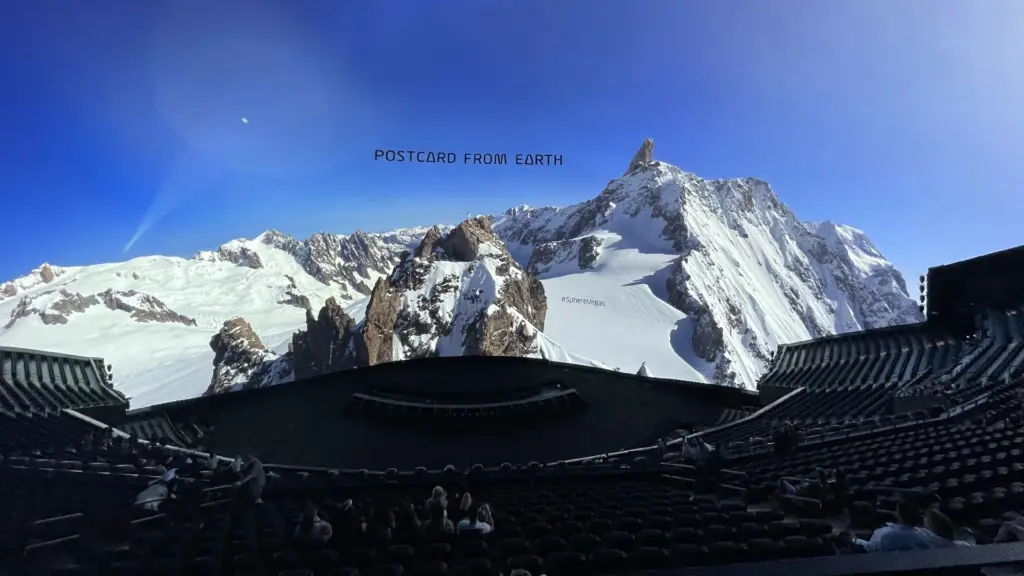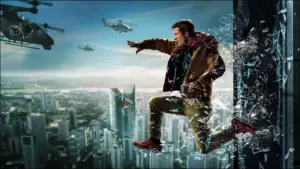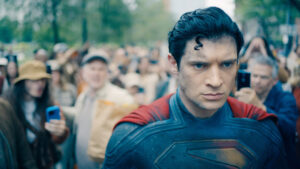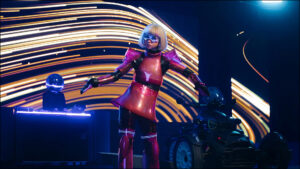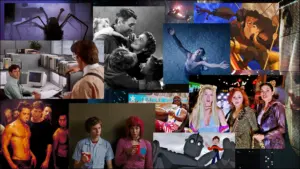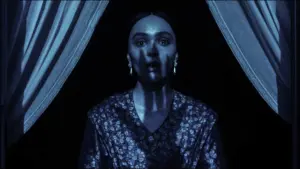The Sphere is enormous. Built by the parent company of Madison Square Garden for an eye-watering $2.3 billion, the Sphere was conceived as a futuristic music venue off the Las Vegas Strip. The size of a sports arena, it seats up to 20,000 people, about the same as the Garden. But what makes the Sphere so special – and so expensive – is its gargantuan curved video screen, wrapping around the interior of the sphere 270 degrees. Twenty times the size of the largest IMAX projection, it’s the largest and highest definition LED screen in the world, capable of 240 foot tall images at 16K resolution.
Since it opened in September 2023, U2, Phish, and Dead & Company have played the Sphere. But on nights when there is no concert, the venue screens Postcard from Earth, a 50-mintue 4D film by writer-director Darren Aronofsky.
Going in I was skeptical. For one thing, the show is pricey. Including fees, tickets to the 50-minute screening cost about $100 for nosebleed seats and can be more than twice that for front row center. Could any movie be worth $2 per minute? Plus I always find so-called 4D presentations to be gimmicky. Postcard from Earth has not only vibrating seats but also smell-o-vision. Ugh. But I’m a fan of Aronofsky, and I was in Vegas anyway, so I rolled the dice and gambled that it would be interesting if nothing else.
The evening got off to a slow start. After waiting in very long lines to get through security, I entered the Sphere “atrium”, a cavernous, almost-cathedral-like, sci-fi themed lobby featuring self-described 22nd Century technology. The glowing, sculptural light installations and the high-ceilinged, almost-cathedral-like atrium set an overall vibe of techno-optimism that fits the Sphere venue generally and Aronofsky’s Postcard from Earth in particular. Entering the futuristic space felt a bit like walking onto the set of Logan’s Run. And since the actual film doesn’t start for 45 minutes after the showtime listed on your ticket, you have plenty of time to buy merchandize, concessions, and booze.
Or, while you hang out in the atrium, you can take advantage of your chance to interact with a sub-HAL artificial intelligence chatbot in the body of an uncanny valley animatronic “robot.” It can understand vocal questions from the audience and respond like ChatGPT. I suppose it might seem cool if you’ve never seen what current A.I. can do, but it comes off as pretty cheesy for the more tech savvy viewer.
When I finally entered the Sphere arena itself, I was confronted with rows and rows of dauntingly steep seats, crammed closer together than economy class on an airplane. I recommend that you don’t look down until you find your seat.
I didn’t really know what to expect when Postcard from Earth finally began. Before the show started, while the audience was being seated, there was a white rectangle in the middle of the front wall, roughly the shape of a typical widescreen movie frame. Then the film began and … it was a normal movie.
The image is very clear and the CGI is top-notch, but it’s just a conventional Ray Bradbury-style sci-fi short story. We see human space travelers awaken from cryogenic sleep like we’ve seen so many times. It turns out that they’re colonists from an ecologically devastated Earth on a mission to terraform a new planet. It’s a concept one would expect from the writer-director of Mother! and Noah, with a neat techno-spiritualist production design similar to the space sequences in Aronofsky’s The Fountain.
I have to admit I was disappointed. The audience seemed restless, too, taking selfies and TikToks and staring at their phones as much as at the movie. Then it happened. At a key moment in the story the spaceship’s computer charges its passengers to “Remember Earth” and the image suddenly bursts from its frame and blooms into full size, completely covering the entire 160,000 square feet of screen in literally breathtaking 16K photography. People gasped audibly. They oohed and aahed like at a fireworks show. Disappointment evaporated. People started putting away their phones. And within minutes Aronofsky had won them all over. No phones in sight.

The image is astonishing. At normal viewing distance, the human eye can only perceive about 8K resolution. What 16K resolution gets you is the ability to blow up the image to the size of four football fields without losing clarity, especially when shot in 60 frames per second. The images are so sharp they genuinely look real. It feels less like watching a movie than like being inside a bubble, as if the walls of the sphere are clear and you’re looking not at a screen but out into the real world.
This main section of Postcard from Earth is a non-narrative nature documentary like you might see at a natural history museum, with jaw-dropping photography designed to showcase the Sphere’s cutting-edge technology. And, boy, was it a sight to see. Taking up my entire field of view, the image felt more immersive and more convincing than virtual reality. Plus, no goggles! From my cheap seat in the back of the theater I could see the rest of the audience sloping downward in front of me, along with the stairs, railings, and floor far below. From this vantage the sphere looked like a dome window above a spacecraft floating through space.
It’s pricey for what is essentially a pretentious IMAX nature documentary, but I would pay it again. It’s the kind of experience one might pay $100 in Vegas to see. For my money it’s better than a circus or an illusionist: it’s cinema.
Aronofsky clearly wanted to give Sphere customers more than just a cool slideshow. He wanted to celebrate and honor nature and remind his viewers about their vocation to protect it. The mood of the resulting short film is worshipful, aiming for transcendence. At its center is a nonnarrative cinematic symphony that tells the story of life on Earth in four parts.
First is a joyful celebration of natural beauty that reminded me of a less-angsty version of the long creation sequence in The Tree of Life. Then in the second and third movements the movie shifts focus to humanity, moving from the beauty of human culture to the destructive effects of industrialization in a pair of sequences that steal heavily from the visual tone poems Baraka and Koyaanisqatsi. But Aronofsky is ultimately optimistic and recycles the resolution of WALL-E for his fourth and final movement that ends with a hopeful vision of new life amid a post-apocalyptic ruin.
The 16k images were indescribably gorgeous, and I appreciated Aronofsky’s attempt to frame them inside an environmentalist propaganda sci-fi story. But I wish there had been less voiceover spelling out the obvious meaning of the images. All the talking becomes intrusive after a while. Even so, the images were so powerful it was easy to tune the voices out.
At the end of the Las Vegas-touring day, Postcard from Earth might not be much more than an aesthetically ambitious theme park ride — like an art house version of Captain EO or Soarin’ Over California with a philosophical point of view – but it’s a remarkable experience nonetheless. Even the dumb vibrating seats worked. Leave it to Darren Aronofsky to make the best damn gimmicky 4D movie of all time.

